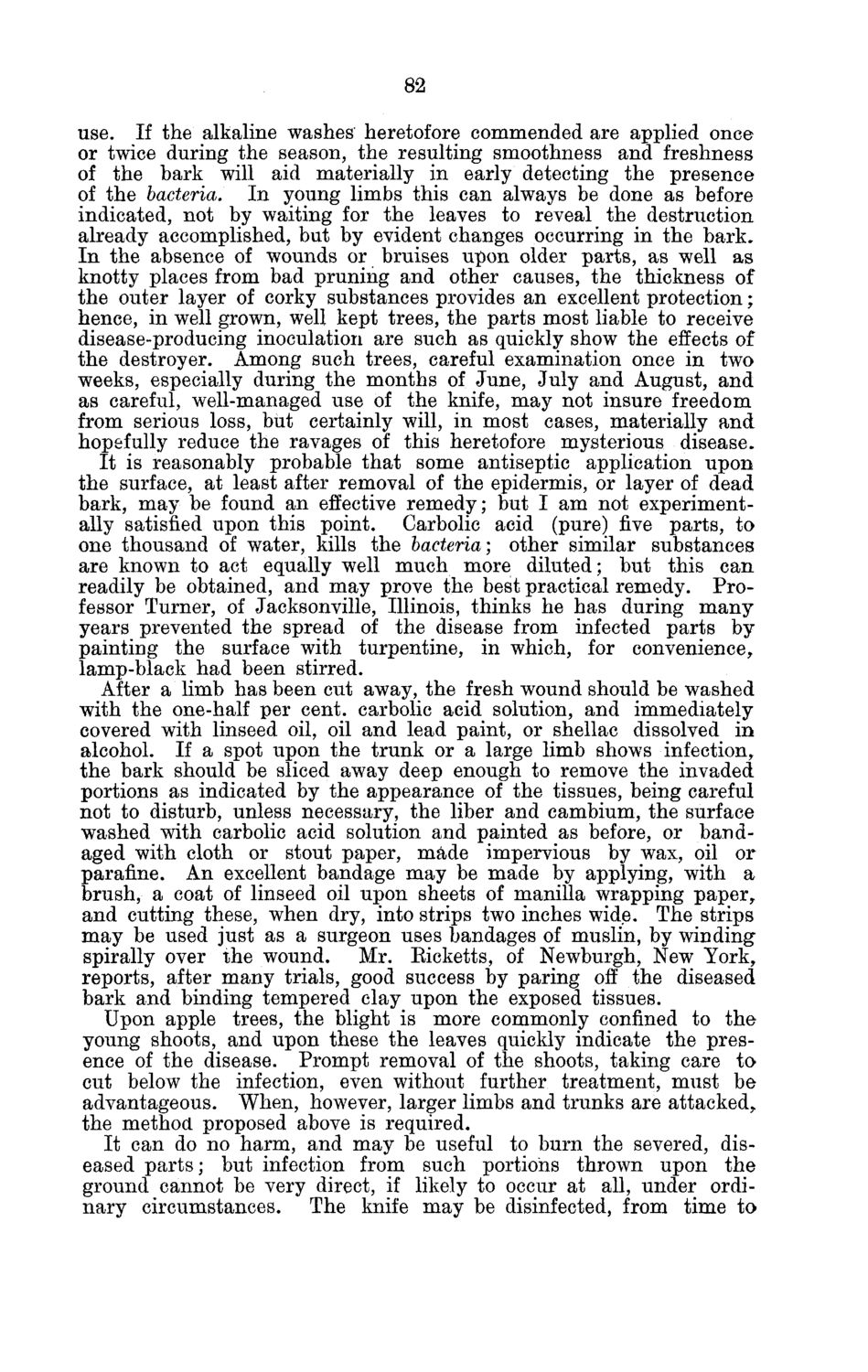| |
| |
Caption: Board of Trustees Minutes - 1880
This is a reduced-resolution page image for fast online browsing.

EXTRACTED TEXT FROM PAGE:
82 use. If the alkaline washes heretofore commended are applied once or twice during the season, the resulting smoothness and freshness of the bark will aid materially in early detecting the presence of the bacteria. In young limbs this can always be done as before indicated, not by waiting for the leaves to reveal the destruction already accomplished, but by evident changes occurring in the bark. In the absence of wounds or bruises upon older parts, as well as knotty places from bad pruning and other causes, the thickness of the outer layer of corky substances provides an excellent protection; hence, in well grown, well kept trees, the parts most liable to receive disease-producing inoculation are such as quickly show the effects of the destroyer. Among such trees, careful examination once in two weeks, especially during the months of June, July and August, and as careful, well-managed use of the knife, may not insure freedom from serious loss, but certainly will, in most cases, materially and hopefully reduce the ravages of this heretofore mysterious disease. It is reasonably probable that some antiseptic application upon the surface, at least after removal of the epidermis, or layer of dead bark, may be found an effective remedy; but I am not experimentally satisfied upon this point. Carbolic acid (pure) five parts, to one thousand of water, kills the bacteria; other similar substances are known to act equally well much more diluted; but this can readily be obtained, and may prove the best practical remedy. Professor Turner, of Jacksonville, Illinois, thinks he has during many years prevented the spread of the disease from infected parts by painting the surface with turpentine, in which, for convenience, lamp-black had been stirred. After a limb has been cut away, the fresh wound should be washed with the one-half per cent, carbolic acid solution, and immediately covered with linseed oil, oil and lead paint, or shellac dissolved in alcohol. If a spot upon the trunk or a large limb shows infection, the bark should be sliced away deep enough to remove the invaded portions as indicated by the appearance of the tissues, being careful not to disturb, unless necessary, the liber and cambium, the surface washed with carbolic acid solution and painted as before, or bandaged with cloth or stout paper, m&de impervious by wax, oil or parafine. An excellent bandage may be made by applying, with a brush, a coat of linseed oil upon sheets of manilla wrapping paper, and cutting these, when dry, into strips two inches wide. The strips may be used just as a surgeon uses bandages of muslin, by winding spirally over the wound. Mr. Eicketts, of Newburgh, New York, reports, after many trials, good success by paring off the diseased bark and binding tempered clay upon the exposed tissues. Upon apple trees, the blight is more commonly confined to the young shoots, and upon these the leaves quickly indicate the presence of the disease. Prompt removal of the shoots, taking care to cut below the infection, even without further treatment, must be advantageous. When, however, larger limbs and trunks are attacked, the method proposed above is required. It can do no harm, and may be useful to burn the severed, diseased parts; but infection from such portions thrown upon the ground cannot be very direct, if likely to occur at all, under ordinary circumstances. The knife may be disinfected, from time to
| |